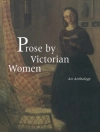The story of silk is an old and familiar one, a tale involving mercantile travel and commercial exchange along the broad land mass that connects ancient China to the west and extending eventually to sites on the eastern Mediterranean and along sea routes to India. But if we shift our focus from economic histories that chart the exchange of silk along Asian and Mediterranean trade routes to medieval literary depictions of silk, a strikingly different picture comes into view. In Old French literary texts from the twelfth and thirteenth centuries, emphasis falls on production rather than trade and on female protagonists who make, decorate, and handle silk.
Sea of Silk maps a textile geography of silk work done by these fictional women. Situated in northern France and across the medieval Mediterranean, from Saint-Denis to Constantinople, from North Africa to Muslim Spain, and even from the fantasy realm of Arthurian romance to the historical silkworks of the Norman kings in Palermo, these medieval heroines provide important glimpses of distant economic and cultural geographies. E. Jane Burns argues, in brief, that literary portraits of medieval heroines who produce and decorate silk cloth or otherwise manipulate items of silk outline a metaphorical geography that includes France as an important cultural player in the silk economics of the Mediterranean.
Within this literary sea of silk, female protagonists who ‘work’ silk in a variety of ways often deploy it successfully as a social and cultural currency that enables them to traverse religious and political barriers while also crossing lines of gender and class.
Tabella dei contenuti
Introduction. Sea of Silk: A Textile Geography
Chapter 1. Women and Silk: Remapping the Silk Routes from China to France
Chapter 2. Women Silk Workers from King Arthur’s France to King Roger’s Palermo (Yvain ou Le Chevalier au lion)
Chapter 3. Women Working Silk from Constantinople to Lotharingia (Le Dit de l’Empereur Constant, Le Roman de la Rose ou de Guillaume de Dole)
Chapter 4. Following Two ‘Ladies of Carthage’ from Tyre to North Africa and Spain to France (Le Roman d’Enéas, Aucassin et Nicolette)
Chapter 5. Women Mapping a Silk Route from Saint-Denis to Jerusalem and Constantinople (Le Pèlerinage de Charlemagne)
Chapter 6. Silk Between virgins: Following a Relic from Constantinople to Chartres
Glossary
Notes
Works Cited
Index
Acknowledgments
Circa l’autore
E. Jane Burns is Druscilla French Distinguished Professor of Women’s Studies at the University of North Carolina, Chapel Hill. She is author of Courtly Love Undressed: Reading Through Clothes in Medieval French Culture and Bodytalk: When Women Speak in Old French Literature, both also available from the University of Pennsylvania Press.












